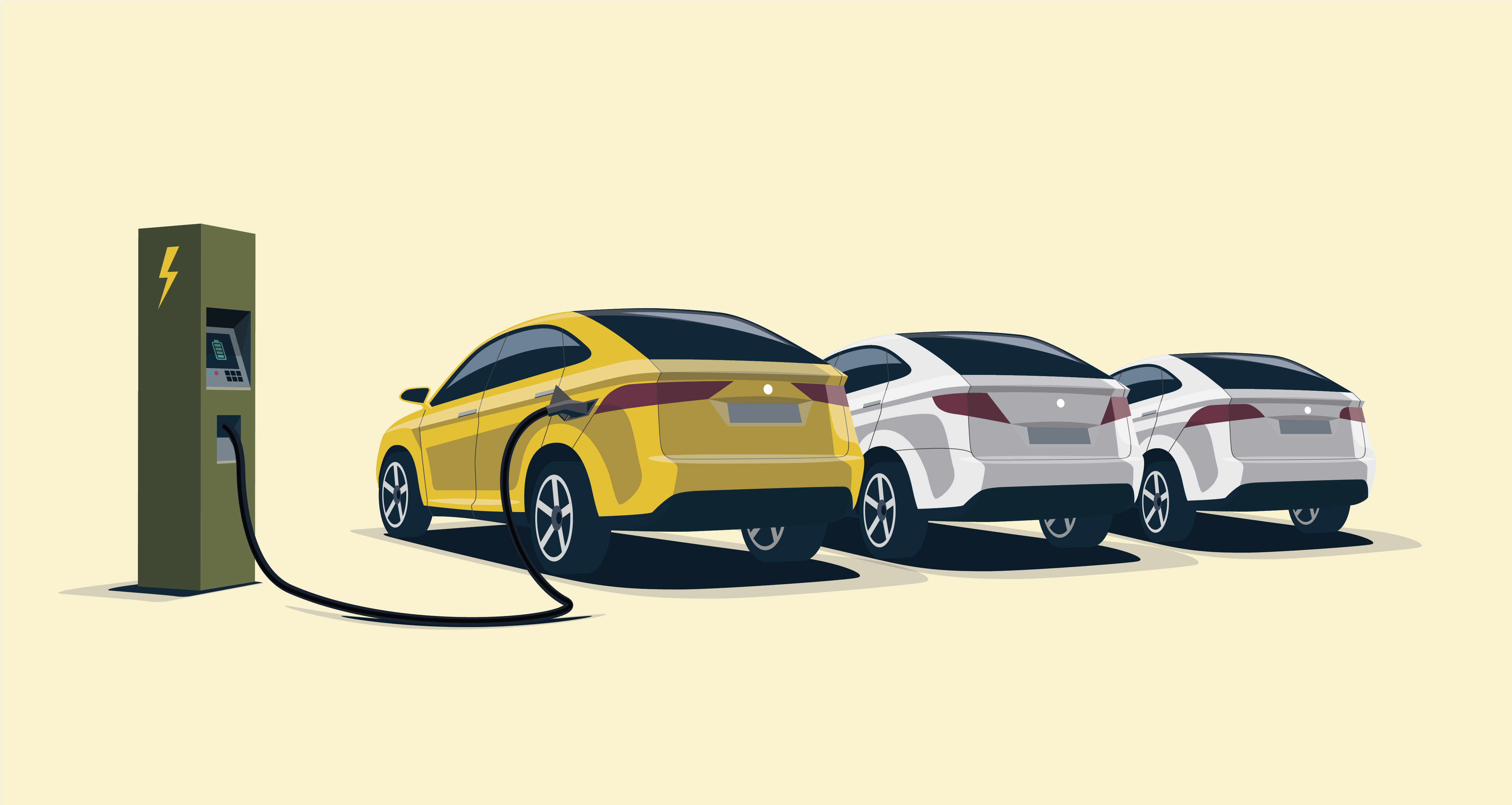
by Joel Sams
In January 2021, General Motors announced it would sell only electric vehicles by 2035, joining a growing list of automakers to make electric-only commitments. In November, President Joe Biden signed an executive order setting a goal for half of all new vehicles sold in the U.S. to be zero-emission by 2030. California and New York have made similar commitments to zero-emission vehicles by 2035.
It may be consumers, though, who make the most compelling case for electric vehicles. According to a report from the Consumer Technology Association, four in 10 automobile owners say they are likely to consider an electric vehicle (EV) for their next purchase. Among those who already own electric vehicles, support is even stronger — 92% of current EV owners say their next car will likely be an EV as well.
The surge in demand is undeniable. What’s less clear is how to meet that demand. As EVs become more common, states will face challenges including power and grid infrastructure, charging, distribution and changing tax structures. What can states be doing now to prepare?
During the 2021 CSG National Conference in Santa Fe, New Mexico, the Future of Sustainability Policy Academy hosted a panel of experts to provide insight into upcoming challenges and opportunities for EV infrastructure.
Anna Denecke, director of infrastructure initiatives for the American Society of Civil Engineers, noted that America’s infrastructure received a grade of C-minus in the American Society of Civil Engineers’ 2021 Report Card.
It’s not just roads and bridges that require investment. Denecke said the country needs to shore up built networks, as well. She pointed out that electricity relies on a complex patchwork of generation facilities and distribution lines. Most of the grid is aging, with some components more than 100 years old.
“We basically need to rewire America,” she said. “We now have solar in New Mexico, we have wind in Kansas and Iowa, and these resources need to get to the coast. It’s going to require quite a bit of build-out and modernizing of our energy grid.”
Amy Brink, vice president for state affairs at the Alliance for Automotive Innovation, said the automobile industry plans to invest $330 billion in vehicle electrification by 2025, as well as offer 130 models for sale in the U.S. market by 2026.
“You will see pickup trucks, you’ll see more SUVs, you’ll see certainly the subcompact and the mid-size, but they’re coming in all shapes and sizes,” Brink said.
The industry hit a significant milestone in October 2021, Brink said, with EVs accounting for 5% of all new car sales. But that percentage will climb rapidly. By 2026, Brink expects EVs to account for 26% of all vehicles sold. To support this rapid change, residential and commercial infrastructure will have to grow to accommodate charging.
“Very few have access to charging in their homes,” Brink said. “You can certainly use your plug-in in the wall, but it’s going to take you about 12 to 17 hours to charge your vehicle, which probably isn’t ideal. So, we want to get more and more conversations started with commissions and localities to start laying the groundwork for upgrading building codes to include electric charging in homes.”
People living in apartments and condos, as well as people who use street parking, face an additional set of challenges that states and localities will need to address.
“Everybody that’s in an apartment deserves to have access to their own electric charger,” Brink said. “And so we have to start talking about how we get charging at least hooked up in each of the parking spaces at each of these condo buildings….”
The way people buy cars is also changing. According to a report from McKinsey, half of all consumers in key markets worldwide say they are interested in buying cars online. Currently, though, online sales account for less than 5% of purchases.
“The absence of a traditional dealer structure allows new mobility players to save up to 25% (in dealer margins and incentives) on the price of each car,” the report said. “Traditional dealers see the handwriting on the wall: two-thirds expect that their OEMs [original equipment manufacturers] will introduce direct sales channels by 2025.”
Speaking during the CSG National Conference, however, Andy Koblenz, executive vice president for legal and regulatory affairs at the National Automobile Dealers Association, said dealerships will be a necessary partner in the transition to EVs.
“Dealers are all in on electric vehicles,” Koblenz said. “They want those opportunities. They want the opportunity to sell that car to anyone ready, willing and able to buy it.”
Koblenz said that dealers aren’t just excited about electric vehicles — he believes they will play an important role in educating consumers on charging, safety and operation.
“Dealers are the ones who are going to be holding the hands of consumers, explaining to them, overcoming some of the hesitancy that exists in their mind right now,” he said.
EVs are changing the way states think about funding roads and highways. According to the Urban Institute, 26% of highway and road spending came from state and local fuel tax revenue ($52 billion) in 2019.
“The future is not the gas tax,” said Andrew McLean, a transportation policy specialist with CDM Smith and a former Maine state representative. “It’s a road usage charge or some other charge that will provide sustainable funding for the future.”
He also called on leaders to work together on bipartisan infrastructure solutions, and to take full advantage of opportunities through the Infrastructure Investment and Jobs Act (IIJA).
“We can’t keep having conversations about our C- report card every 10 years,” he said. “Electrification is the key to the future, and the IIAJ provides significant investment. Transportation is not a sexy topic, but it’s so fundamental and so core to what we do as Americans. […] It is our obligation to find a solution. There are no Democratic roads or Republican bridges.”



